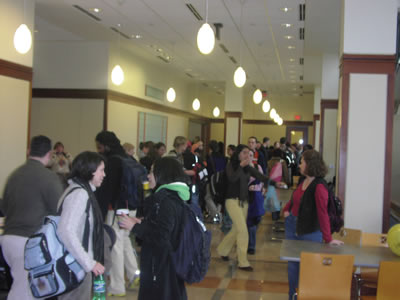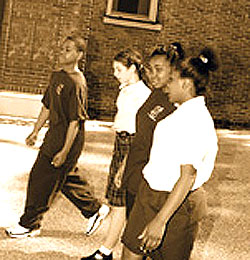By Lynn Schultz-Writsel
|
|---|
DESPITE THE PROJECTED DEMAND nationwide for RNs, more than 30,000 qualified applicants were turned away from nursing schools last year, according to data released in December 2005 by the American Academy of Colleges of Nursing (AACN). The primary reasons? A shortage of nurse educators, clinical placement sites, and classroom space. Due to these problems of overcrowding, the number of qualified applicants turned away has increased from 3,600 in 2002 to 32,617 in 2005.
The Johns Hopkins University School of Nursing has worked hard to meet the ever-growing need for nurse leaders and has increased its baccalaureate program enrollments by more than 60 percent since 1998. The school’s accelerated program has helped expedite the placement of new nurses in the workforce by enabling students with a prior undergraduate degree to become practicing nurses in just 13.5 months.
With these increased enrollments, the school now operates beyond the full physical capacity of the Anne M. Pinkard Building, which was opened in 1998 to bring together faculty, staff, and students who were dispersed across the East Baltimore campus. Classrooms are being used to maximum capacity. Lecture hall seating is limited, with many students sitting on folding chairs or in the aisles. Faculty members are sharing offices originally designed to accommodate only one person, and hallways and closets have been converted into offices. Admissions officials at the school were forced to cap the student body for fall 2006 because of the physical limitations of the Pinkard Building.
The school’s planned addition to the Pinkard Building will address the overcrowded conditions and allow the school to actively address the nursing shortage, expand its programs, launch new research and service initiatives, and continue to integrate current nursing workplace technology into the learning experience for students. In addition to enhancing the ability of students to participate fully in the educational experience, the new space will add to the unique sense of community among faculty, students, and staff that today continues the tradition of the Hopkins nurse and creates the leaders for nursing’s future.

 Big Steps Toward Curbing Obesity in Kids
Big Steps Toward Curbing Obesity in Kids Monkey Business
Monkey Business True Blood
True Blood Education, Leadership, and Collaboration
Education, Leadership, and Collaboration







